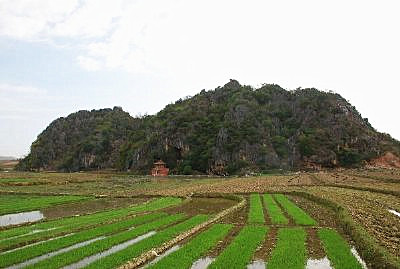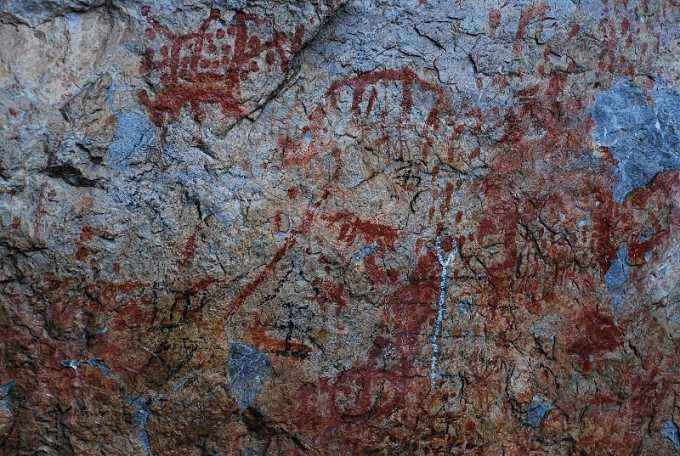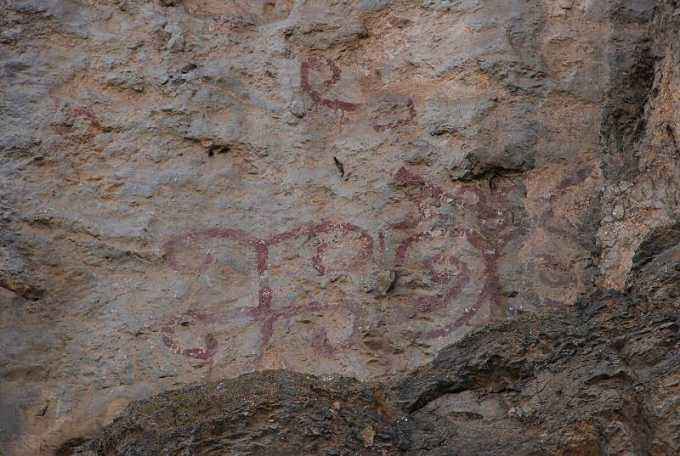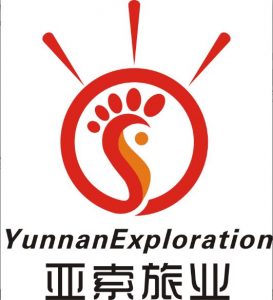
Discovery of Ancient Graffiti in Wenshan, Yunnan: A Compilation of Rock Art Sites
Chinese Name:文山岩画汇总
English Name: Summary of Wenshan Rock Paintings
Introduction of Rock Art in Wenshan
Rock art, also known as cliff art, refers to paintings made on the surfaces or steep sides of rocks, which are natural mineral aggregations that form the Earth’s crust. The rock art of Wenshan is described as “ancient, rich in content, densely distributed, exquisitely crafted with a unique charm, and characterized by a primitive, bold, and free-spirited style. The compositions are elegant and robust, the patterns and symbols are clear and bright, and the images are vivid and distinct.” According to research, the “graffiti” created by the people of Wenshan dates back to the Neolithic period and can be found in six counties and cities within Wenshan Prefecture. Below is a summary of the rock art sites in each county and city:
Qiubei County
Honghuashan Rock Art Located on a cliff 7 km southwest of Honghuashan Village in Yuezheng Town, Qiubei County, this rock art site features a cliff face approximately 50 meters high and 27 meters long, facing a low-lying basin. The art covers an area of about 80 square meters, with 26 discernible images and 437 indistinct figures. The largest image is 85 cm high and 40 cm wide, while the smallest has a diameter of 2 cm. The art is divided into four sections from left to right, featuring images such as the sun, moon, humans, and horses, all in red. The content primarily depicts hunting, domestication, and celestial worship. The painting technique is simple, using line drawings without detailed depiction of facial features or the fine details of figures and animals, reflecting a certain level of abstraction.
Shizishan Rock Art
Found on the cliff of Shizishan Xianren Cave, about 3 km east of Yuezheng Town in Qiubei County, the highest point of this rock art is approximately 11 meters above the ground, with the lowest at about 8 meters. The artwork is divided into two sections, featuring images in black and red, including trees, humans, fish, and tools. The main image is a “human-shaped flying bird” occupying about 0.32 square meters, with a human head and torso, adorned with feather patterns on the head and arms, resembling a bird flying through a dense forest. The juxtaposition of trees, birds, and humans reflects the awareness of life and ecological consciousness among the ancient inhabitants.
Heijinglong Rock Art
Located on the cliff of Dalong Mountain Cave near Heijinglong Village, west of Qiubei County, the cliff is about 50 meters high, facing northwest and oriented southeast. The images include a “human-shaped flying bird,” human figures, heads, and ancient text. The “human-shaped flying bird” is similar to the image in the Shizishan Rock Art in Qiubei.
Pu Ge Rock Art
Situated on a cliff 3 km west of Pu Ge Village in Shuanglongying Town, Qiubei County, this site was declared a cultural heritage protection unit by the Wenshan Prefecture government in 1997. The cliff is about 30 meters high, facing west. According to records from the first cultural relics survey in the 1980s, the rock art covers about 50 square meters, with 24 discernible images and over 10 indistinct ones. The largest image is 2.2 meters high and 1 meter wide, while the smallest is 20 cm high, depicting fertility worship. The artwork is located 7 meters above the ground, rendered in red.

Guangnan County
Mao Dong Rock Art Found 1 km northeast of Ping Shang Village in Jiu Mo Township, Guangnan County, this newly discovered rock art is distributed on both sides of the cliff at Mao Dong. Currently, only two discernible patterns have been identified.
Shuitou Cave Rock Art Located on the cliff at Shuitou Cave, 1 km southeast of Zhetai Village in Guangnan County, this site features an image of a flying dragon, painted by local villagers in the late Qing Dynasty to pray for a continuous water source.
Pingshan Rock Art This site is situated 1 km east of Huiliangzi Shang Village in Pingshan Administrative Village, Liantown Township, Guangnan County. The cliff faces southwest, is about 30 meters high, and 25 meters wide, with a concave middle section and protruding upper and lower ends. The rock art covers an area of approximately 8.16 square meters. The images, rendered in red, have partially peeled off due to weathering.
Nongka Rock Art Located on Nongka Mountain, about 300 meters south of Nongka Village in Zhongzhai Administrative Village, Zhulin Town, Guangnan County, this rock art is situated about 30 meters in front of a pond, with a natural cave about 50 meters to the north. The cave is spacious, and the rock art covers an area of about 26.19 square meters, depicted in red.
Tianfang Village Xianyan Cliff Art Located on a cliff above the east bank of the Babao River, about 4 km northeast of Tianfang Village, Babao Town, Guangnan County, this cliff art was listed as a key cultural relic protection unit at the county level in 1984. The rock art, approximately 4.3 square meters in size and about 2.1 meters above the ground, has been mostly eroded by magma and covered with Qing Dynasty inscriptions, leaving most of the original images unclear. The remaining discernible patterns include a “human figure in a ‘大’ shape,” a cattle head, and a “hunting scene,” each with its own dimensions, reflecting primitive religious rituals and hunting activities with an early rock art style.
Yanshan County
Dashan Village Rock Art
Located in Dashan Village, Lianhua Administrative Village, Pingyuan Town, Yanshan County (also known as Xiaojian Mountain), this rock art was designated as a county-level cultural relic protection unit by the Yanshan County People’s Government in 2004. In 2005, journalists from CCTV’s “Travel Across China” program filmed the rock art from different angles, and it was broadcast on CCTV Channel 4, showcasing Yanshan’s rich historical and cultural heritage. The rock art area spans 22 meters in length, 8 meters in height, and is about 1.5 meters above the ground. From left to right, the art is divided into nine groups. The largest image is 25 cm, and the smallest is only 3 cm. The entire composition predominantly depicts people riding horses, occupying more than 80% of the artwork. The pigment used is red hematite, and the images are rendered in brown. The painting technique is simple, utilizing line drawings without detailing facial features or the fine details of the figures and animals. The small, densely packed images exhibit a certain level of abstraction and expressiveness. The rock art is relatively well-preserved, with clear images reflecting grand scenes centered on hunting and domestication, involving figures, animals, and geometric shapes. Experts have preliminarily identified it as a depiction of hunting and domestication activities during the Neolithic period.
Kazi Rock Art
Located on the cliff of Dabaiyan, about 2 km south of Kazi Village, Luojihei Administrative Village, Ameng Town, Yanshan County, this rock art is situated about 3.5 meters above the ground. Covering an area of 3.25 square meters, the artwork is depicted in red, featuring images of “human-shaped birds,” “sun,” “fields,” and other patterns. The images are clear, and the colors are bright.
Wenshan City
Shundian River Rock Art
Found in Shigu Township, Wenshan City, the Shundian River rock art is a newly discovered site.
Hongzichong Rock Art
Located on a cliff 6 km away from Liujing Village, Xinfazhai Village, Liuqing Township, Wenshan City, this rock art is divided into two groups from top to bottom. The rock art is about 2 meters high and 3 meters wide, with 41 discernible images. The largest single image is 20 cm, and the smallest is 8 cm, arranged irregularly.

Malipo County
Yanlanshan Rock Art
The “Yanlanshan Cliff Art” is located on Yanlanshan, about 4 km north of Malipo County. The cliff art is about 2.04 meters long and about 2.2 meters above the ground. According to data from the Wenshan Prefecture Cultural Relics Management Office, there are 20 images in total, including 13 human figures, four snake figures, one stilted house, and several irregular symbols and indistinct images. Cultural relic experts have identified this cliff art as a work from the late Neolithic period, with a history of over 4,000 years, sharing a common origin with the Zuojiang Huashan Cliff Art in Guangxi.
Dawangyan Rock Art
Located on the southern end of Yangjiao Laoshan, east of Malipo County, the Dawangyan Rock Art is a representative work of the Red River Basin within the Southern China rock art system. It has been recognized by the international rock art community as “representing a significant primitive creativity.” In December 1987, the Yunnan Provincial Government declared it a third batch of provincial key cultural relic protection units.
Fengshandong Rock Art
This site is situated on a cliff in Fengshandong, about 2 km southwest of Longling Village, Zhen’an Town, Malipo County. The rock art covers an area of about 8 square meters and was discovered in July 1987.
Maguan County
Geheba Rock Art
Located on the cliff of Geheba, west of Qingshui Village, Babu Town, Maguan County, this rock art was discovered during the first cultural relics survey in Wenshan Prefecture. The cliff art area spans about 8 square meters and features about 15 distinct images and over 40 indistinct ones. The images, mainly in red, include figures such as cattle, sun, and fish.
Qingshui Village Rock Art
Found on a cliff 1 km southwest of Qingshui Village, Babu Town, Maguan County, this rock art site includes seven distinct images and multiple indistinct ones, primarily depicting the sun, moon, and trees. The rock art covers an area of about 15 square meters and is painted in red.
Xichou County
Zhouzi Cliff Rock Art
The “Zhouzi Cliff Art” is located on a cliff in Zhouzi Village, Lishu Town, Xichou County. The art covers an area of 4 square meters and was discovered during the first cultural relics survey in Wenshan Prefecture.


 7 Days GolfingTour
7 Days GolfingTour
 8 Days Group Tour
8 Days Group Tour
 8 Days Yunnan Tour
8 Days Yunnan Tour
 7 Days Shangri La Hiking
7 Days Shangri La Hiking
 11 Days Yunnan Tour
11 Days Yunnan Tour
 6 Days Yuanyang Terraces
6 Days Yuanyang Terraces
 11 Days Yunnan Tour
11 Days Yunnan Tour
 8 Days South Yunnan
8 Days South Yunnan
 7 Days Tea Tour
7 Days Tea Tour
 8 Days Muslim Tour
8 Days Muslim Tour
 12 Days Self-Driving
12 Days Self-Driving
 4 Days Haba Climbing
4 Days Haba Climbing
 Tiger Leaping Gorge
Tiger Leaping Gorge
 Stone Forest
Stone Forest
 Yunnan-Tibet
Yunnan-Tibet
 Hani Rice Terraces
Hani Rice Terraces
 Kunming
Kunming
 Lijiang
Lijiang
 Shangri-la
Shangri-la
 Dali
Dali
 XishuangBanna
XishuangBanna
 Honghe
Honghe
 Kunming
Kunming
 Lijiang
Lijiang
 Shangri-la
Shangri-la
 Yuanyang Rice Terraces
Yuanyang Rice Terraces
 Nujiang
Nujiang
 XishuangBanna
XishuangBanna
 Spring City Golf
Spring City Golf
 Snow Mountain Golf
Snow Mountain Golf
 Stone Mountain Golf
Stone Mountain Golf















